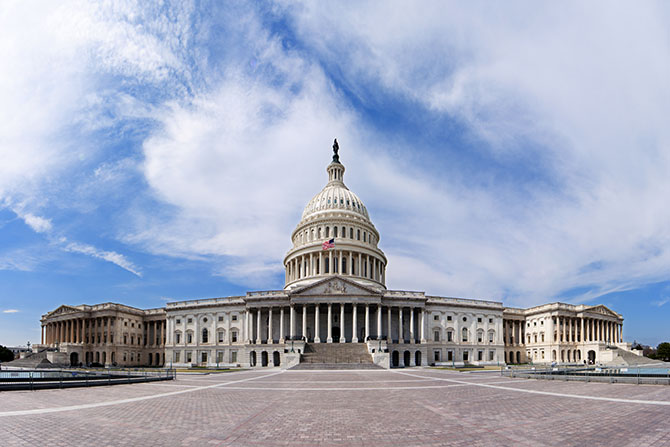The banking agencies are tasked with writing and implementing regulations for the laws enacted by Congress, but they do not have free reign. In creating these rules, regulators must act within the boundaries of their statutory authority or run the risk of legal challenge — and ABA has not been afraid to hold them accountable in court when they get it wrong. However, Congress can also hold agencies accountable when there are policy disagreements by simply overriding final rules.
In ABA’s view, regulators have exceeded their authority in several recent regulatory actions, including the 1071 final rule, the credit card late fee final rule, the new Community Reinvestment Act final rule and the expansion of UDAAP authority via an update to an examination manual.
When I addressed bankers at the 2024 ABA Washington Summit earlier this year, I assured them that ABA would use every tool in our toolbox to push back against the “regulatory tsunami” that regulators have unleashed upon the banking industry. Litigation is obviously a tool that we’ve been forced to use now several times — as evidenced by our four current legal challenges against bank regulators — but it isn’t the only option.
Among the other tools available is a lesser-known mechanism called the Congressional Review Act — which we sometimes refer to as “the other CRA.”
The Congressional Review Act was enacted in 1996 to provide Congress with an avenue for overturning certain federal regulatory actions, but inexperience with the new law and divided government meant it was only used once in its first 21 years. During the Trump administration, however, when Congress and the White House were controlled by the same party, the CRA was used successfully 16 times. Highlights included ABA-backed resolutions to overturn the CFPB’s rule effectively banning the use of mandatory arbitration for financial products — a rule that ABA strongly opposed — and a resolution to nullify the bureau’s 2013 indirect auto lending guidance, after the Government Accountability Office issued a formal decision in 2017 that the guidance constituted a rule.
Congress passed CRA resolutions three more times during the Biden administration, and lawmakers continue to introduce them. Recently, ABA supported a CRA challenge to the CFPB’s 1071 final rule. That CRA challenge was passed by a bipartisan majority in both the House and Senate — and though President Biden ultimately vetoed the measure, it sent a strong and clear signal that Congress disagreed with the bureau’s rule.
In addition, a resolution of disproval under the CRA was also passed in May to invalidate the Securities and Exchange Commission’s Staff Accounting Bulletin 121, which changed the way that banks and other publicly traded entities are expected to account for digital assets held in custody. ABA is also supporting a CRA challenge to the CFPB’s recently finalized credit card late fee rule. The House Financial Services Committee favorably reported that resolution of disapproval in April.
The Congressional Review Act is so powerful because resolutions can move to the Senate floor quickly through an expedited “fast track” procedure and, once on the floor, a resolution requires only a simple majority vote to pass — not 60 votes, like most legislation. This fast-track process stipulates a specific timeframe during which rules issued in this Congress can be invalidated by the next Congress: the rule must be issued during a window of 60 session or legislative days prior to Congress’ adjournment at the end of the year in order for the next Congress to have an opportunity to invalidate the rule. We are now nearing the window where any final rules that are issued by the agencies could be challenged under the CRA in the next Congress — yet another reason why electoral outcomes matter.
However the elections shake out in November, ABA’s focus will remain unchanged: supporting a policy environment that supports America’s banks in their mission to supply credit to their customers, clients and communities. And we’ll continue to use every tool in the toolbox to ensure that our broad and diverse banking sector can continue to thrive.
ABA believes that government policies should recognize the industry’s diversity and the role of banks as drivers of economic growth and job creation. Laws and regulations should be tailored to correspond to a bank’s charter, business model, local markets and risk profile so banks across America can serve their customers and communities. From delivering the latest industry news to developing mission-critical training offerings, ABA supports America’s banks.
Email Rob at nichols@aba.com.









